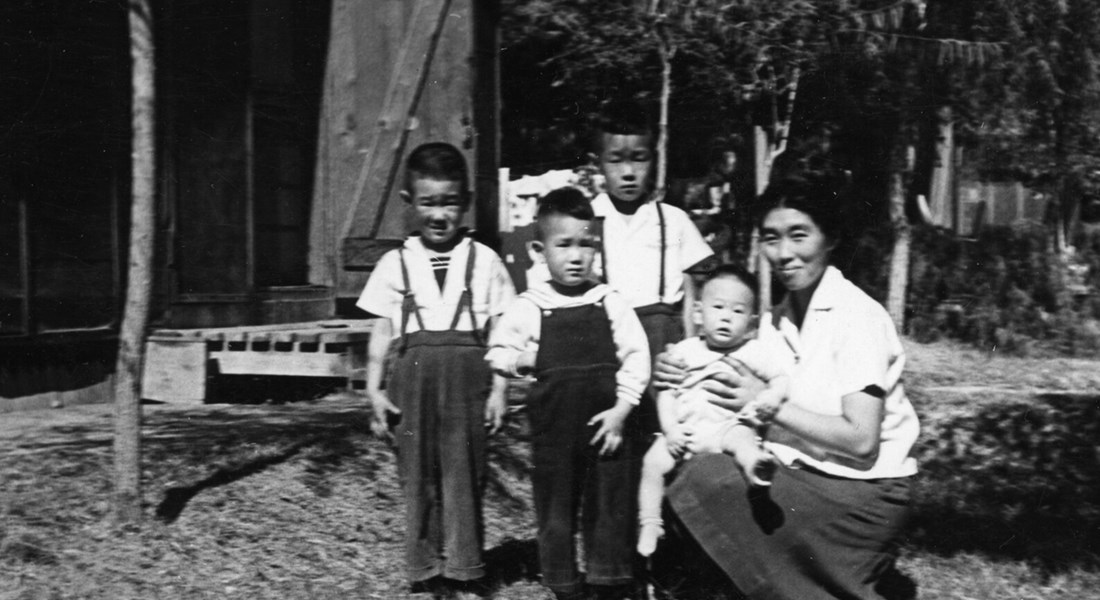Posted19 Apr 2024
- In
Madame Butterfly and my Japanese-American Experience
As a 4-year-old American of Japanese descent being sent to a federal prison camp during World War II (1939-1945), I could not imagine a story like Madame Butterfly.
My parents were born in California, but after an economic recession hit America following World War I (1914-1918), my grandparents moved back to Japan to raise them there. In 1937, my parents returned to the United States as adults to reclaim their American birthright. In the late 1940s, my mom developed an interest in listening to the radio and classical music records—Beethoven, Mozart, Smetana, etc. Our home was filled with classical music and opera. With her nurturing during my middle school years, I also developed a lifelong ear for classical music which eventually led, to my surprise, to opera. Like many, I got hooked through the music of Puccini, Verdi, Mascagni, and other well-loved composers (“it’s the melody stupid”)
In particular, I got hooked on Madame Butterfly’s arias, which led me to study the story, plot, and characters in more detail. Pinkerton, as an American character, enjoyed respect and privilege as perceived by a European composer like Puccini. By contrast, my American-ness had been adversely impacted by racist U.S. laws which prevailed at the time of Butterfly’s composition. For example, a federal 1790 law prevented my Japanese-born grandparents to become naturalized U.S. citizens; a 1913 California law prevented them from owning a house, farm, or real estate.
In contrast to Pinkerton’s life of privilege, my parents began life in America as working class: my father became a trained chef and my mother cleaned people’s homes. Four years later, World War II was declared with the bombing of Pearl Harbor in Hawaii by Japanese planes. Soon after, my entire family, the Nishikawas, were imprisoned for “looking like the enemy”.
My family and I, along with other Japanese Americans, were sent to concentration camps in Arkansas, Arizona, California, Colorado, Idaho, Nevada, Utah, and Wyoming. We were placed in Poston War Relocation Center – the largest of these concentration camps – built in 1942 in southwestern Arizona. There were three separate camps within Poston; we were put into Camp 1 with 6,000 other people. At its peak, over 17,000 people were interned at the three Poston Camps, making it the third largest “city” in Arizona.
We lived in poorly constructed tar-papered barracks and ate in military-style mess halls. Families had to bathe daily in community showers where the toilets were. The weather was unbearable with temperatures reaching upwards of 115 °F in the summer heat and as low as -35 °F in the coldest winter.

After the trauma of the World War II camp incarceration suffered by my parents and the Nikkei ( Japanese American) community, our family settled in Gilroy, California, hoping for a life of peace and well-being. Talk about Camp was rare, but they coached us kids to become more ‘Americanized’—get into team sports, become more proficient in English, study hard, and bring honor to one’s family. But it would still take more profound changes in legal, social, cultural environments before I could imagine myself enjoying the respect and privileges that Pinkerton enjoyed in Japan.
Following World War II, these racially punitive statutes along with anti-miscegenation (marriage between people of different races) laws were revoked. Thus began the climate change for my brothers and me to live more American. Also new were the large waves of Asian war brides who immigrated to the U.S. with their servicemen-husbands. (Pinkerton could have been way ahead of his time!) This had a profound impact socially and culturally on Asian Americans of my generation and beyond. Even though Butterfly and Pinkerton’s story had been set in the 1890s, it had started to become ‘familiar’ in mid-20th century. Fortunately, in real life these trans-racial marriages had happier outcomes in contrast to the tragic endings of operatic tales and plots.
We can speculate that if Butterfly’s son moved to the United States to live with Pinkerton and his wife Kate, he would have had better prospects and a happier life than living as a mixed-raced individual in Japan, where xenophobia, or fear of others from different cultures, was more entrenched—then and even now. Europeans have long been involved with inter-ethnic marriages. Puccini might not have had second thoughts about having a mixed-race character were he able to compose a sequel to Butterfly. In contrast, Japanese have long considered themselves as mono-ethnic. Even today, Japan has the lowest immigrant acceptance rate of any developed country in the world.
As a World War II camp survivor, we were reminded by my parents of certain Japanese cultural concepts and principles of life and living. One was gambare (gam-bah-REH) which in English sort of means “to survive by persistence; to stick to it so as to overcome; to make a critical decision." This was pounded into us whenever we encountered adversity in life. They told us that gambare was how the Nikkei community survived camp life. While not specifically mentioned (or even alluded to) in the opera story or script, my perceptions of Butterfly’s actions in Act III are that she was driven by gambare to honor her familial samurai traditions by seppuku (ritual suicide).
As a longtime opera aficionado, I’ve regarded the plot lines as fairy tales or fantasies. And indeed, most are. This essay is the first time I was challenged with the open-ended question of finding meaning of themes and ideas presented in an opera which connects with real life experiences and insights. I hope my attempts here will inspire you to do the same.
A.H. Nishikawa is a member of Opera Philadelphia’s Community Advisory Council. This essay also appears in the Madame Butterfly student guide.
Leave your comment below.

 Facebook
Facebook Twitter
Twitter More
More